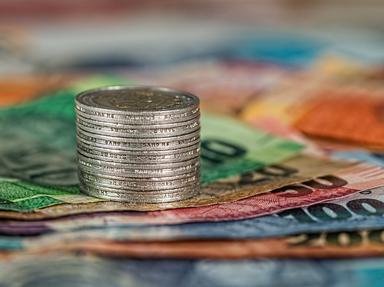Quiz Answer Key and Fun Facts
1. The UK released a bimetallic coin that was introduced in 1998 (although some are dated 1997). There have been many commemorative issues since then. What was the face value of the coin?
2. One country suffered from inflation in the 1980s and early 1990s, leading to a currency reform in 1992, which introduced many new bimetallic coins, including 1, 2, 5, and 10 peso coins intended for circulation, as well as 100 peso commemoratives with a center ring made of actual silver. Which country was this?
3. The "toonie" was a bimetallic coin introduced in 1996 in Canada, and it was worth 2 dollars. Which animal was on the reverse?
4. At the time of introduction, which Euro coin(s) were bimetallic?
5. Which coin was the first bimetallic coin to be made?
6. This country decided to make a 10 dollar coin to replace the 10 dollar banknote. However, both the coin and the banknote circulated. The 10 dollar bimetallic coins started being made in 1993, but they ceased production a few years later. Which country is this?
7. In which country would you find a bimetallic 5 rand coin?
8. Thailand has a bimetallic coin worth ___ baht, Russia has a bimetallic coin worth ___ rubles, and India has a bimetallic coin worth ___ rupees. What is this number?
9. In 2005, Turkey reformed their currency so that one million old lira would equal one new lira. Which new coins were bimetallic? (100 kurus = 1 lira)
10. One country minted a trimetallic coin, with three rings: one in the very center, one around the center, and one on the outside. Which country did this?
Source: Author
hotdogPi
This quiz was reviewed by FunTrivia editor
WesleyCrusher before going online.
Any errors found in FunTrivia content are routinely corrected through our feedback system.

